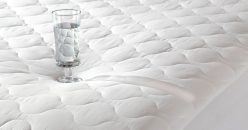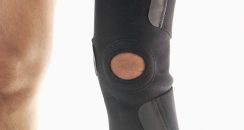SUV vs Sedan Good Driving Posture [Best Sitting Position]

Cars are modes of transportation designed with four wheels and intended to carry passengers. The sedan comes in several types, namely: notchback, fastback, two-door, hard top, hatchback, and chauffeured. While a sport utility vehicle is designed like a station wagon but with the chassis of a light truck. It is known as 4×4, 4WD, or by its brand names such as Jeep or Land Rover.
Comfort in a car can be based on driving comfort, seating comfort, and air conditioning. It totally depends on the manufacturers as some sedans are set up to be sporty, with stiff suspensions while some SUVs are set up for luxury and should not be taken off-road. They are poseurs.
If we were to compare the two, a sedan has low ground clearance which makes it a more comfortable experience especially if you drive on winding roads. While an SUV has high ground clearance meaning they can easily go on off-road adventures. Sedans have three compartments while the SUV has only two. This is vice versa with their row seats with the latter having three and the former two.
If you are looking for a reliable family, then it is very likely that a sedan or an SUV is on top of the shopping list. In terms of comfort, both cars offer almost the same space but the terrain in which the vehicle is to be used matters.
A larger vehicle such as an SUV can feel intimidating because you have to think about making wider turns to accommodate for the longer body and driving at a slower speed so that you have more room to stop. Although driving an SUV is not difficult you should know that it is different from driving a sedan.
Sedans have relatively softer suspensions as compared to SUVs. The latter being designed to be able to handle rugged terrain and heavy loads, it is stiffer and thus a jarring suspension setup. So for long-distance drives, a sedan is way more comfortable.
Sedans having a low ride height, long and sleek makes for a low center of gravity. This greatly reduces the body rolls making them more stable and suitable for high speeds. Even though SUVs have opulent interiors, the interiors of a sedan are plusher.
Never underestimate the importance of a good driving position. Whether you are a learner or an experienced driver good posture helps you become a better driver. A bad driving position is likely to give you back problems.
The first thing to consider is your seat. You do not want to be so far back that you have to stretch for the clutch. Neither do you want to be so close that you are cramped and the gas and brake get difficult to operate?
The ideal distance from the clutch is as far back as you can be without having to stretch. When you try to do it is more of a trial and error until you are in a position where it is easy to control the clutch.
The next thing to consider is the height. Most cars these days have a height-adjustable feature at the side of the seat. It is not always the case to have the seat lower because you are taller. Always compare the length of your legs to that of your upper body.
For example, if you have short legs and your upper body is quite long, a lower seat would be suitable. Your head should always be above the steering wheel while your nose is at par with your dashboard.
Try to find the happy medium whereby you are not so far back to be hunching while moving your seat backward or forward. The next thing to adjust is your headrest. Generally speaking, you want the main part of your head restraint in line with the main part of your head.
It is designed to catch your head if it goes back so if it catches your head when you do that, then it is in a good position. How do you adjust it? There is normally a button on that little bit of plastic or on the side that you can push to make it higher or lower.
Normally, there is a lever underneath the steering column that you can push down and it just goes up and down in and out. You measure how close you need to by putting your wrist on the top of the wheel while still having a bend in your elbow. A 90-degree bend is highly discouraged because when you are turning the wheel you might hit your passenger or the side.
Then next is the height. You want it to be high enough so that you can see the dials through the middle of the steering wheel. Once you have got what you want lock the steering wheel in place. An additional tip, do not touch the lever at the same time as the wheel. It might get stuck.
Now that you have a good seating position, you need to put on your seatbelt. Then go to the mirrors. The one right in front of you is the interior mirror which shows you what is behind you. Some are electric but it is quite rare. You will want to adjust it so you see the whole of the back window in it.
The next job is to do your wing mirrors. Different cars have different systems with most of them being electronic. Where you adjust the mirrors by pressing the buttons to turn the mirror at different angles. While the others have a little stick which you use to move the wing mirror or you literally turn the mirror with your hand.
When it comes to the height you want to be able to see half road and half sky. On the top and the bottom of the mirror in order. You also want to be able to see part of your car. Keep in mind that the interior mirror gives a true image while the wing mirrors give a shrunken image. This is due to the fact that the glass of the wing mirrors is convex.
This is good because you get more information in a small space hence you get to see more. But everything looks further away which is not handy when you are trying to judge whether you got time to change lanes on a motorway. While the interior mirror gives the true size and makes it easier to judge how quickly things are approaching you.
From compact SUVs to luxury off-roaders are the best cars with high driving positions. Whether you want either, the demand is always for the best seat in the house. With the roads more crowded than ever, and lorries dominating the roads. Sitting high can make you feel safer.
The primary focus of most sedans is on the comfort they offer to their passengers especially the rear seat passengers due to their long length and wheelbase. On top of that, most manufacturers equip the rear seats with comfortable armrests, sun blinds, and a greater recline angle for added comfort. They also have less cabin noise, more legroom, and back support.
An SUV is pricier than a sedan due to its technology which is quite expensive. For instance, it offers an all-wheel drive or four-wheel drive which is quite an expensive engineer. Also, their size and weight make them consume more fuel besides giving them a higher risk of turnover. While a sedan comes with a standard two-wheel-drivetrain.
In terms of dimensions, an SUV is taller in height as compared to a sedan. You get a better visual of the road and they are more spacious. Due to higher ground clearance, an SUV has a higher center of gravity that further affects its high-speed capability while making it more stable. In case you require more storage, you can simply roll down the backseat.
Speaking of a sedan you need to be careful while driving on bad roads otherwise you might end up scratching the underbody. Thus, the SUV has larger dimensions than a sedan. However, the seating position of a sedan is lower to the ground making it easier to handle during cornering as compared to an SUV.
The SUVs have a better water wading capability over flooded streets. The reason is they have their air intakes and exhausts located at a slightly higher level than that of a sedan. The sedan gives you a cozier drive as compared to SUV. And since it sits quite close to the ground it gives a sporty appeal. While their great aerodynamics helps them to stick to the surface of the road. Hence offering a better mileage.
If you are looking to buy an SUV or a sedan, I hope I have shed some light on your decision-making process. Now I am going to give you some tips on the best seating position to avoid lower back pain and neck pain.
The first thing is the knee position to the hip position. You do not want the hip to have a 90-degree angle since it means that there is too much flex in there which can actually irritate the lower back and the hip joint as well.
So always have your legs straightened out a little bit such that the knee is almost on the level of the hip. Hence when you are sitting back, it is going to be a little bit forward taking the stress off your lower back. And if you are in an SUV having your seat a little higher or lower can help with this position.
Tip number 2 is the seat angle. So typically sitting at 90 degrees we are nice and vertical but it doesn’t really bode well because we get more compression in our low back as a result. The ideal angle is 110 to 130 degrees.
This will allow you to have a straighter back without decompressing the lower spine. And remember not to limit your ability to see in the car. Ensure that there is no uneven wearing on your seat because it suggests you might be sitting on one side more hence tilting the pelvis.
The third tip is the headrest position. There are some people who can’t even reach their head back and touch their headrests due to a lack of range and motion on their back. To get more support for your lower back sit up straight on your already set seat foundation and naturally your head is going to sink back and touch that headrest.
After you drive for a while you tend to slouch on your seat. But with your mirrors well-adjusted you will not be able to see hence acting as a reminder for you to sit up. Straightening your back. A rolled towel to put on your back is also good lumbar support.

![Good Posture When You Draw [How to Get the Best Position]](https://www.goodposturehq.com/wp-content/uploads/thumbs_dir/Good-Posture-When-You-Draw-prlnpziekmihpj280qk0337a867a3d3oaq0qc83nbo.jpeg)



